A lone Native-American man, born and raised in Shawnee tribes, sat alone in his home. He had been drinking the entire day, overwhelmed with humiliation. His brother, Tecumseh, was an established warrior and skilled leader, while he was viewed by his people as a useless drunk, and the black sheep of the family. However, Lalawethika’s life would change in an instant, when a series of visions in 1805 gave him a mission from their god, the great spirit: to unite the tribes and save them from the influence of the Americans, by starting a religious movement and creating a native confederacy. He changed his name to Tenskwatawa, and set out to convert the natives back to their ways of old. From the visions that made him Tenskwatawa until the battle of Tippecanoe, Tenskwatawa and his religious movement became the base of Tecumseh’s native confederacy, and of one of the strongest native resistances ever to form against the United States on the continent.
Tenskwatawa was, in his early years, unable to compete with the legacy that his father and his brother, Tecumseh, had already built for themselves. His father was a warrior, and his brother was a charismatic young man who had already caught up to his father in terms of strength. Tenskwatawa was economically dependent on his wife and on his brother Tecumseh; he spent most his days drinking alcohol. He also allegedly lost his eye due to shooting an arrow while he was drunk.1 His attempts working with medicine failed as well, when an influenza pandemic proved too much for him and his practices to handle.
Tenskwatawa’s life would take a complete turn while he sat in his wigwam, where he allegedly received a vision from their god, the great spirit. This vision was so strong that those who came to check on him believed that he had died, as no one who got close to his body when he was in a trance could detect any breathing. While his fellow Shawnee were preparing him for a funeral the next morning, he awoke, surprising those around him. He spoke of the great spirit, and of the punishments that awaited those who followed in the footsteps of the white man, which was the Shawnee’s term for the Americans. Over the summer of 1805, he continued to have visions, and he formed his beliefs around them. He denounced alcohol as an evil drink, and began preaching resistance against the influence that the white man had on the Shawnee people. He preached against sexual relations between natives and whites, and demanded that all western clothing must be given to the first passing white people that any of his followers saw. He hated the chiefs who had previously sold territory to the Americans, claiming that they were wicked people poisoning the minds of those under them.2 He saw the whites as children of the evil spirit known as Motshee Manitou, and he sought to separate the native tribes from white influence entirely.
His religious and social teachings spread like wildfire among the Shawnee and the neighboring Delawares, quickly capturing their minds and hearts with a call to return to their ways of old. Seeing the success that Tenskwatawa was having, Tecumseh supported him wholeheartedly. With Tecumseh’s help, Tenskwatawa set up a new town near Greenville, which became the center for the new movement the brothers had sparked.3 With the objective to further his influence and fame among the tribes of the Delaware and Shawnee, as well as to reach out to other tribes in the northwest, he set out on a witch-hunt, weeding out chiefs who were loyal to American settlers, as well as Christian natives in the Delaware, Shawnee, and Wyandot tribes. Tecumseh used this religious movement to outline his own goals: unite the tribes into a native confederacy, and push out the American settlers encroaching on native lands—not the land of one tribe, but the land that belonged to all native peoples. From 1805 to 1807, Tecumseh was now playing a supportive role in a movement that his brother was heading. Tenskwatawa had found his calling, and for a time, he was ahead of Tecumseh in fame and relevance. But his movement, and the witch-hunts in neighboring tribes, caught the eye of William Henry Harrison, the governor of the Indiana Territory.4
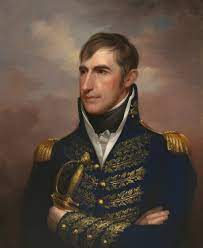
William Henry Harrison was a soldier who had previously fought against the natives in Ohio. He became governor of the Indiana territory and he saw himself as a protector of the American settlers there; the rising movement from Tenskwatawa worried him. The two groups were at odds already, and this clash of interests in the region was nothing new. Harrison had used the natives’ view of land to his advantage, squeezing treaties out of the tribes from 1802 to 1805.5 Many of the chiefs that Tenskwatawa scornfully denounced had cooperated with Harrison and others in the past for land deals that both he and Tecumseh despised. Tenskwatawa’s witch-hunt crossed a line in Harrison’s eyes, and he directly challenged the power that Tenskwatawa claimed to have. He directed his statement at the Delawares, telling them to ask Tenskwatawa to prove his power and perform a miracle, namely, to “cause the sun to stand still–the moon to alter its course.” Tenskwatawa responded by predicting a solar eclipse, putting his skill as a prophet on display to the native tribes across the northwest, humiliating Harrison in the process.6
Tenskwatawa’s performance caused members of many tribes to meet with him and follow his movement. Natives of the Kickapoo, Fox, Sauk, Potawatomi, Ottawa, Winnebago, and Menominee tribes traveled to Greenville, causing the city to become overpopulated.7 Tecumseh and Tenskwatawa met again in 1808, and together they built a new town near the Tippecanoe river. They hoped this new location would reasonably hold the influx of natives traveling to the region. The new town was called Prophetstown, and the two brothers worked together to settle there. Tecumseh relied on the strength of the movement that Tenskwatawa had created, and Tenskwatawa relied on Tecumseh’s charismatic nature and his physical and diplomatic strengths. Warriors from all over the northwest were attracted to the new settlement, as it became a hub of Native-American cultural activity.8
Tenskwatawa despised the westerners, but both brothers came to the conclusion that they could not resist the Americans without help. With tensions rising between the British Empire and the United States, Tenskwatawa asked Tecumseh to go to the British in Canada, and ask for supplies, and more importantly, for weapons. While Tecumseh traveled, Tenskwatawa went on a diplomatic mission to lower tensions between the settlers and his people.9 After a heated debate via diplomatic delegation, he succeeded in lowering those tensions, and he was able to gain a large amount of food from Harrison, which Prophetstown needed to survive through the winter. Tecumseh also returned with good results, having successfully gotten supplies from the British. However, Harrison was not completely oblivious to the planned resistance, and before the delegation left for Prophetstown, he warned that “if the Indians ever again dared to lift up the tomahawk against the United States, the Americans would not rest until they all were dead or driven beyond the great lakes.” For now, tensions had lowered between the United States and the natives of Prophetstown, and Tenskwatawa’s influence lived through the winter of 1808, if just barely.10
As the year of 1809 began, Tecumseh’s war-like stance began to stand out over Tenskwatawa’s cultural renewal. The winter of 1808 saw the deaths of a number of natives in Prophetstown. In April of 1809, some of the Ottawa tribe challenged his power by slaying a Shawnee woman and her child, after Tenskwatawa had promised that the great spirit would punish anyone who committed violence in Prophetstown. William Henry Harrison renewed a hostile stance against Prophetstown in the same month, threatening the safety of Tenskwatawa and his city. These events called the power of the prophet into question, and they caused a shift in interest of the natives from the cultural focus of Tenskwatawa to the defensive confederacy of Tecumseh. Tecumseh went on the road in January of 1809, traveling from tribe to tribe to gather more members for his and his brothers’ confederacy. The prophet and he, however, saw this as not a competition between ideals, but as a way to bounce their skills off of each other. Both men had the same goal, and later in 1809, Tecumseh yet again traveled, this time in the name of the prophet, to gain support from natives living in the Illinois territory.11
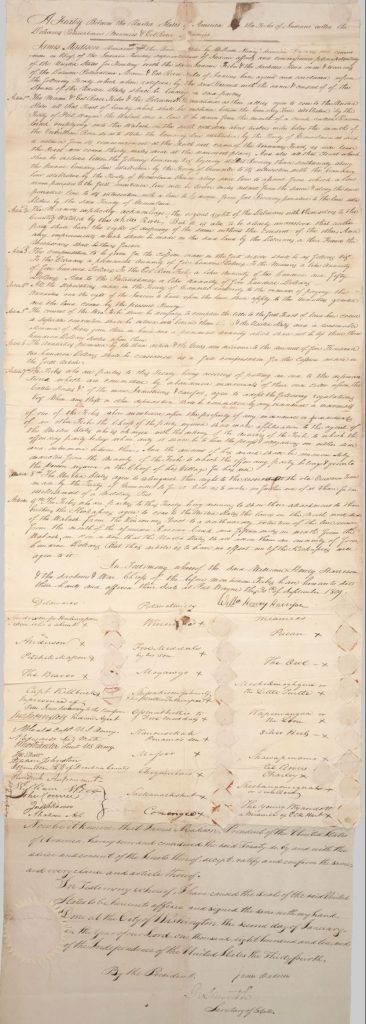
With the continuation of hostile relations, Harrison sought to undermine the power of the prophet and Tecumseh in 1809, and coerced certain chiefs of the Kickapoo, Potawatomi, and Delaware tribes into signing the Treaty of Fort Wayne. With this treaty, Harrison gained millions of acres of land from the natives, and had successfully undermined the growing native resistance. Tenskwatawa and Tecumseh were absolutely enraged by the treaty, as it was an insult to their belief that native lands belonged to native peoples. Tecumseh was invited to meet with Governor Harrison, and he readily went to meet with him. Tecumseh passionately defended his and Tenskwatawa’s belief that native land belonged to natives and could not be sold, putting religion into his words, using his brother’s fame to propel their ideas forward. It was in using religious rhetoric that Tecumseh delivered one of his most famous quotes a few days before the main debate with Harrison began. “No tribe has the right to sell, even to each other, much less to strangers. Sell a country? Why not sell the air, the great sea, as well as the earth? Did not the great spirit make them all for the use of his children?” On August 15, 1810, Tecumseh met with Harrison, and the two dueled in a battle of wills and words.12 Despite his fierce rhetoric and silver tongue, Tecumseh lost his temper at the meeting, and it ended in hostility, with both parties drawing weapons and causing negotiations to break down. The council was brought to an end. The following morning, however, they met again at their camp. Tecumseh opted for a less hostile route, but his statements had the same goal. If the United States did not undo the Treaty of Fort Wayne, it would mean war. Harrison stated that he would give the terms to the President, but he also stated that Tecumseh shouldn’t hold out much hope. Tecumseh sorrowfully replied that “I hope the great spirit will put sense enough in his head to induce him to direct you to give up this land. It is true, he is so far off, he will not be injured by the war; he may still sit in his town and drink his wine, whilst you and I will have to fight it out.” Throughout their meetings, Tecumseh tied religion closely to his words, which yet again tied the brothers together. Tecumseh spoke, but his words involving religion were very likely a result of Tenskwatawa’s ideals. After the meeting, Tecumseh’s and Tenskwatawa’s only hope of undoing the treaty was to wait for President Madison’s words.13
Tecumseh and Tenskwatawa parted ways again in late August. Tenskwatawa desired to stay home and focus on his city, while keeping the flames of his spiritual movement alive. Tecumseh hastily set out to recruit more tribes and warriors to their cause. Now it was Tenskwatawa who would take a seat, focusing on keeping his followers in line, while Tecumseh traveled from tribe to tribe, attempting to gather as many warriors as possible. It was now Tecumseh’s job to spread the word from the northwest to the rest of the natives in an attempt to bring them together to resist American oppression. In his eyes, the movement was now just as political as it was spiritual. He went from tribe to tribe, from the Illinois territory all the way down to Alabama, where he attempted to recruit the Chickasaws, Choctaws, and Cherokee.14 However he found fierce resistance. In his speeches and debates, his words had an almost equal mix of spiritual and political fervor, matching his new stance. One example came from a heated debate with the chief of the Choctaw tribe. Tecumseh desperately tried to get the Choctaw to abandon their treaties with the Americans, saying “Where today are the Pequot? Where are the Narragansett, the Mohican, the Pocanet, and other powerful tribes of our people? They have vanished before the avarice and oppression of the white man, as snow before the summer sun… Will we let ourselves be destroyed in our turn, without making an effort worthy of our race? Shall we without a struggle, give up our homes, our lands, bequeathed to us by the Great Spirit?”15 Despite his impressive words, he and his proposal for a native alliance was rejected by the Choctaw, and he then continued on to the next tribe. While his travels continued throughout the American frontier, Tenskwatawa made a fatal mistake.
Before Tecumseh departed, Tenskwatawa and he had agreed not to provoke the Indiana governor. However, once Tecumseh left for the south, Tenskwatawa sent runners out in September of 1811 to the Miami, Kickapoo, and Potawatomi tribes, asking their warriors to return to Prophetstown. At the same time, Tenskwatawa sent envoys to the British again, while tensions between the United States and the British Empire were escalating. Tenskwatawa asked for additional supplies of weapons and clothing. Despite being mostly defensive actions, corrupted words from spies and enemies of the Prophet reached officials of the United States. Harrison, along with the governors of the Illinois and Louisiana territories, agreed that the Confederacy had to be put down before more warriors from both Tecumseh’s recruiting and Tenskwatawa’s runners arrived back at the native city. Tenskwatawa sent another delegation to Harrison with promises of peace, but by now, Harrison’s mind had been set, and he began to gather up an army at the banks of the Wabash river, using claims of horses stolen by the natives as reason to open hostilities.16
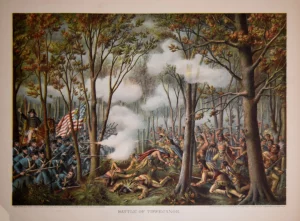
Harrison set out for Prophetstown in 1811 with 950 troops, and set camp only seventy miles from Prophetstown. Once he was firmly in position, Harrison sent a list of demands to Tenskwatawa. He demanded that all natives who had attacked American settlers had to be surrendered to him. He also demanded that any and all goods stolen by the natives be returned. Lastly, he demanded Tenskwatawa meet him at a location of his own choosing.17 These terms, if accepted, would disband the confederacy that the brothers took years to build. If they were rejected, it would mean war with the United States. Despite the risks, the terms were rejected by Tenskwatawa, as the warriors who had arrived from the different tribes began calling for war. Tenskwatawa obliged and accepted the call, and he began to make plans to defeat the American force now camped right outside of Prophetstown. Tenskwatawa spent the night riling up his warriors, and he planned to do battle with the Americans with a night attack. Just before dawn broke on November 7, the natives, with surprise on their side, set out to attack Harrison’s camp, using the light from campfires to identify the camp and Harrison’s force.18 The natives attacked from the left and right flanks, hoping to get through the camp and kill Harrison before the Americans had time to react, but they were spotted by soldiers keeping watch. The night of November 6, Harrison ordered his men to sleep with their bayonets fixed to loaded muskets, allowing the troops to quickly mobilize if an attack came. With shots fired, the American camp sprung into action, quickly falling into battle lines. Seven hundred natives then engaged in open battle with the American force, but they were outnumbered and outmatched. In the ensuing three hour battle, the natives were pushed back, and they retreated to Prophetstown. Harrison claimed victory, despite the fact that the casualties from both sides were almost equal in number, from sixty to seventy.
When the warriors returned to Prophetstown, defeated and enraged, they denounced Tenskwatawa’s medicine. They demanded to know why he had misled them to think that it would be an easy victory. He came up with a quick excuse, but his reputation was already tarnished. He had promised the warriors a victory, only for them to be defeated against the white man. One by one, each tribe of warriors abandoned Prophetstown, and, eventually, Tenskwatawa followed, leaving the town that took him years of preaching and work to build with his reputation and his influence among countless tribes. The center of renewed native culture, and the symbol of native resistance, had been left to Harrison, who allowed the tribes to abandon the city. Once it was in his hands, he burned the city to the ground. Tenskwatawa would never recover from this embarrassment, and Tecumseh would continue his efforts to unite the tribes under one banner, despite the loss of his and his brother’s central city.19
Tenskwatawa, from then until the end of the War of 1812, became a background character. He stuck by Tecumseh’s side, helping his brother in uniting the tribes politically, no longer focusing on the religious aspect of their confederacy. He helped Tecumseh strengthen ties with the British, while they built a new town near the location of Prophetstown.20 He still retained a small following, but his reputation had been permanently tarnished by the battle he planned, and his influence had been diminished by broken promises made before the battle of Tippecanoe. Tecumseh would use the alliance of tribes they had built to fight many battles against the Americans during the War of 1812. Throughout the following war, the War of 1812, Tenskwatawa stuck by Tecumseh until his death in 1813 at the Battle of the Thames. He never recovered his fame, and at the end of the war, Tenskwatawa had only a few followers left, a shadow of the power he once held across the entire Northwestern territory.21
Tenskwatawa’s impact on native resistance against American settlers is a tragic story. From a useless drunk to a revered prophet, Tenskwatawa set down the base for his brother’s dream of a native confederacy spanning across the frontier. From his rise in 1805 to his fall in 1811, Tenskwatawa commanded the respect of many followers across many tribes. Tecumseh used his brother’s fame and influence to spring himself forward onto the world stage, allowing him to spread his own ideals, while using religious words in his famous speeches for years. While Tecumseh spread word far and wide, recruiting tribes across North America, Tenskwatawa played a dangerous political game between the British, native tribes, and Governor Harrison, one that eventually ended his influence, power, and fame within the native world. With his defeat at the battle of Tippecanoe, and his failure to deliver on the promise that the natives would be saved if they converted to the ways of old, his name was omitted from American teachings, while Tecumseh had become a symbol of native resistance. In the end, he lost everything he had worked to build, except for the spirit of resistance that Tenskwatawa and his brother built up for years. That, he handed over to Tecumseh, and with it, Tecumseh would go on to fight with the British in the War of 1812, and become a symbol and martyr for Native-American resistance against the oppression of the United States, while Tenskwatawa, and his achievements, would be largely forgotten.
- Rachel Buff, “Tecumseh and Tenskwatawa: Myth, Historiography and Popular Memory,” Historical Reflections / Réflexions Historiques 21, no. 2 (1995): 292–99. ↵
- Peter Cozzens, Tecumseh and the Prophet: The Shawnee Brothers Who Defied a Nation, 1st Edition (New York: Knopf, 2020), 159-161. ↵
- “Biography – TENSKWATAWA – Volume VII (1836-1850),” Dictionary of Canadian Biography (website), accessed October 26, 2021, http://www.biographi.ca/en/bio.php?id_nbr=3689. ↵
- “Biography – TENSKWATAWA – Volume VII (1836-1850),” Dictionary of Canadian Biography (website), accessed October 26, 2021, http://www.biographi.ca/en/bio.php?id_nbr=3689. ↵
- William Freehling, “William Harrison: Life Before the Presidency,” The Miller Center (website), accessed November 5, 2021, https://millercenter.org/president/harrison/life-before-the-presidency. ↵
- “Biography – TENSKWATAWA – Volume VII (1836-1850),” Dictionary of Canadian Biography (website), accessed October 26, 2021, http://www.biographi.ca/en/bio.php?id_nbr=3689. ↵
- “Biography – TENSKWATAWA – Volume VII (1836-1850),” Dictionary of Canadian Biography (website), accessed October 26, 2021, http://www.biographi.ca/en/bio.php?id_nbr=3689. ↵
- “Tenskwatawa (The Prophet),” The Canadian Encyclopedia (website), accessed October 14, 2021, https://www.thecanadianencyclopedia.ca/en/article/tenskwatawa-the-prophet. ↵
- “Biography – TENSKWATAWA – Volume VII (1836-1850),” Dictionary of Canadian Biography (website), accessed October 26, 2021, http://www.biographi.ca/en/bio.php?id_nbr=3689. ↵
- Peter Cozzens, Tecumseh and the Prophet: The Shawnee Brothers Who Defied a Nation, 1st Edition (New York: Knopf, 2020), 218. ↵
- Peter Cozzens, Tecumseh and the Prophet: The Shawnee Brothers Who Defied a Nation, 1st Edition (New York: Knopf, 2020), 219-222. ↵
- William Freehling, “William Harrison: Life Before the Presidency,” The Miller Center (website), accessed November 5, 2021, https://millercenter.org/president/harrison/life-before-the-presidency. ↵
- Peter Cozzens, Tecumseh and the Prophet: The Shawnee Brothers Who Defied a Nation, 1st Edition (New York: Knopf, 2020), 244. ↵
- Peter Cozzens, Tecumseh and the Prophet: The Shawnee Brothers Who Defied a Nation, 1st Edition (New York: Knopf, 2020), 245-263. ↵
- “Pipe Tomahawk Presented to Chief Tecumseh – Infinity of Nations: Art and History in the Collections of the National Museum of the American Indian – George Gustav Heye Center, New York,” accessed October 27, 2021, https://americanindian.si.edu/static/exhibitions/infinityofnations/woodlands/176249.html. ↵
- Peter Cozzens, Tecumseh and the Prophet: The Shawnee Brothers Who Defied a Nation, 1st Edition (New York: Knopf, 2020), 275-277. ↵
- Peter Cozzens, Tecumseh and the Prophet: The Shawnee Brothers Who Defied a Nation, 1st Edition (New York: Knopf, 2020), 278. ↵
- William Freehling, “William Harrison: Life Before the Presidency,” The Miller Center (website), accessed November 5, 2021, https://millercenter.org/president/harrison/life-before-the-presidency. ↵
- Peter Cozzens, Tecumseh and the Prophet: The Shawnee Brothers Who Defied a Nation, 1st Edition (New York: Knopf, 2020), 288. ↵
- “Biography – TENSKWATAWA – Volume VII (1836-1850),” Dictionary of Canadian Biography (website), accessed October 26, 2021, http://www.biographi.ca/en/bio.php?id_nbr=3689. ↵
- “Biography – TENSKWATAWA – Volume VII (1836-1850),” Dictionary of Canadian Biography (website), accessed October 26, 2021, http://www.biographi.ca/en/bio.php?id_nbr=3689. ↵
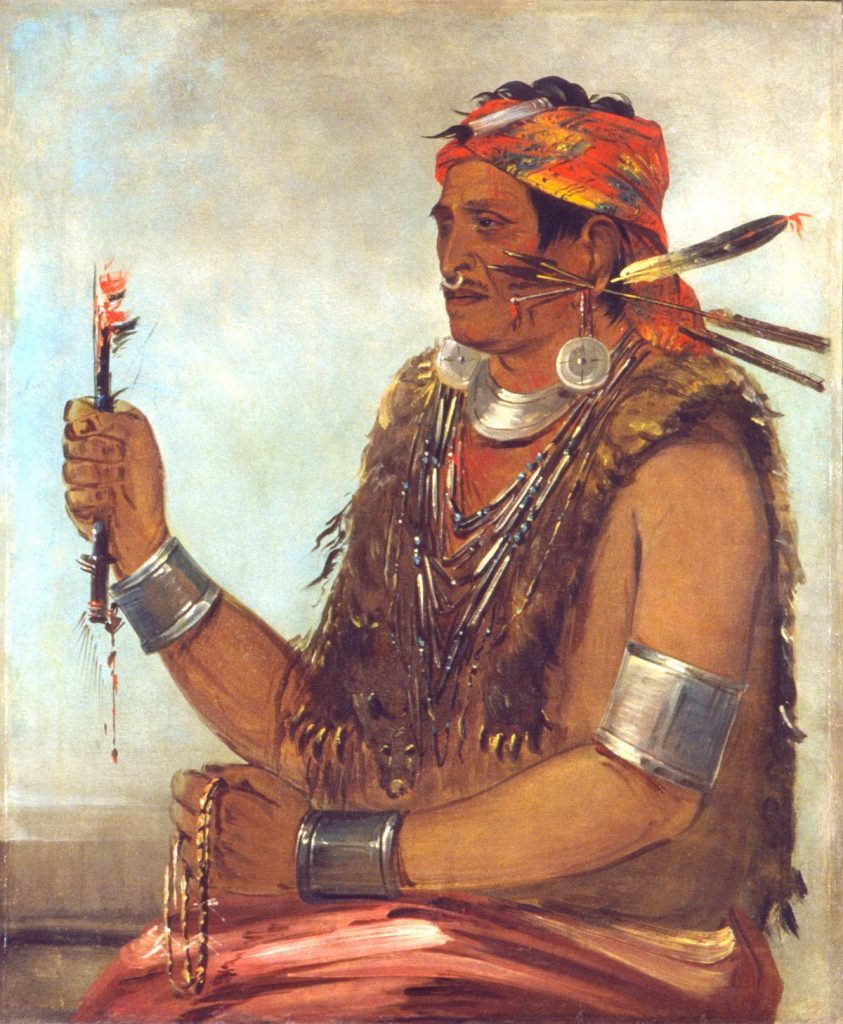


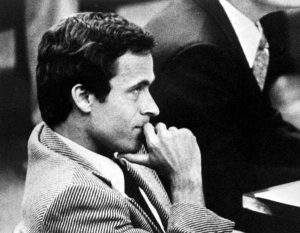
16 comments
Vianey Centeno
I found this piece to be quite intriguing, well I can see why it was chosen for an award. I knew very little to nothing about Tenskwatawa and his tale. The story was told accurately in your piece, which also contained a wealth of significant data. You conducted a lot of research, I can tell. Great writing and pictures all around. Well done.
Dejah Garcia
What a fantastic story. I never knew Tecumseh and had no clue that he had a brother. I think Tecumseh and Tenskwatawa conquest in ferocity. Excellent job, and being super informative. I loved the photos you used in your article it stood out to me. Also, your word choice ( diction) was unique.
Aztlan Alvarado
I never knew that Tecumseh had a brother, so this article really surprised me and told a story of a forgotten Native American legend. It’s heartbreaking to know that certain tribes had been wiped out entirely by the Americans without any trace or word, just gone all of a sudden one day. This article perfectly encapsulates the saying of “History is told by the winners”, and the story of Tenskwatawa is a perfect example.
Martha Nava
Wow, very interesting article. I remember hearing about Tecumseh, but as you said, I have never heard of Tenskwatawa; so this is a very unique topic. His life is very interesting and you really described all of his achievements very well. You also used a lot of sources which is good. I also liked how you included pictures of not only Tenskwatawa but of what was relevant to the paragraph you wrote, very good.
Hali Garcia
This was an interesting article. I knew a little about Tacumseh but I did not know that much about Tenskwatawa and this article taught me a lot about him. I really liked how the author used the images because it gave a visual to that part of the story. After reading this article, I could tell that a lot of research had gone into this article. Great job and congratulations for the nomination.
Phylisha Liscano
This was an extremely interesting article and I can see why your article is nominated for an award. I had little to no knowledge of Tenskwatawa and his story. Your article did justice in telling the story and provided lots of important information. I can tell you did lots of research. Overall great article and images. Good job.
Hannah Young
This was an amazing article and I learned a lot of new information that I would have never known if I did not click on this article to read. I heard echoes of the name Tecumseh but never knew of any family relations he had or that they were such good fighters in their day. Both brothers had such achievements’, even if one overshadowed the other, they both shined. Very thought provoking.
C. Fan
Basically everyone gets taught about Tecumseh and his confederacy in high school, but there’s no mention of Tenskwatawa. Like many others, I didn’t even know Tecumseh had a brother. This article wasn’t only well-written, but I found it incredibly insightful. It often feels that the original inhabitants of the Americas are glossed over as history tells the story of American growth and conquest. In some ways, it makes me think about all the parts of history I missed.
Christopher Metta Bexar
This was a very interesting article . Not only for making a new audience aware of an unknown figure in American history, but in filling in details about his more famous brother Tecumseh. As Dr. Whitener has said, many students of American History tend to focus upon the battles waged in the West by chiefs such as Geronimo and Sitting Bull. They also tend to forget that Native Americans were involved in the Revolution as well as the War of 182.
Kimberly Rivera
Amazing article and impacting story. I have never heard about Tenskwatawa so reading this article has given me a deeper insight into his story. It is quite sad to see how all the effort he put in was taken for granted and how all the attention seemed to go to his brother. He played an important part into the building of native resistance and his brothers’ popularity.